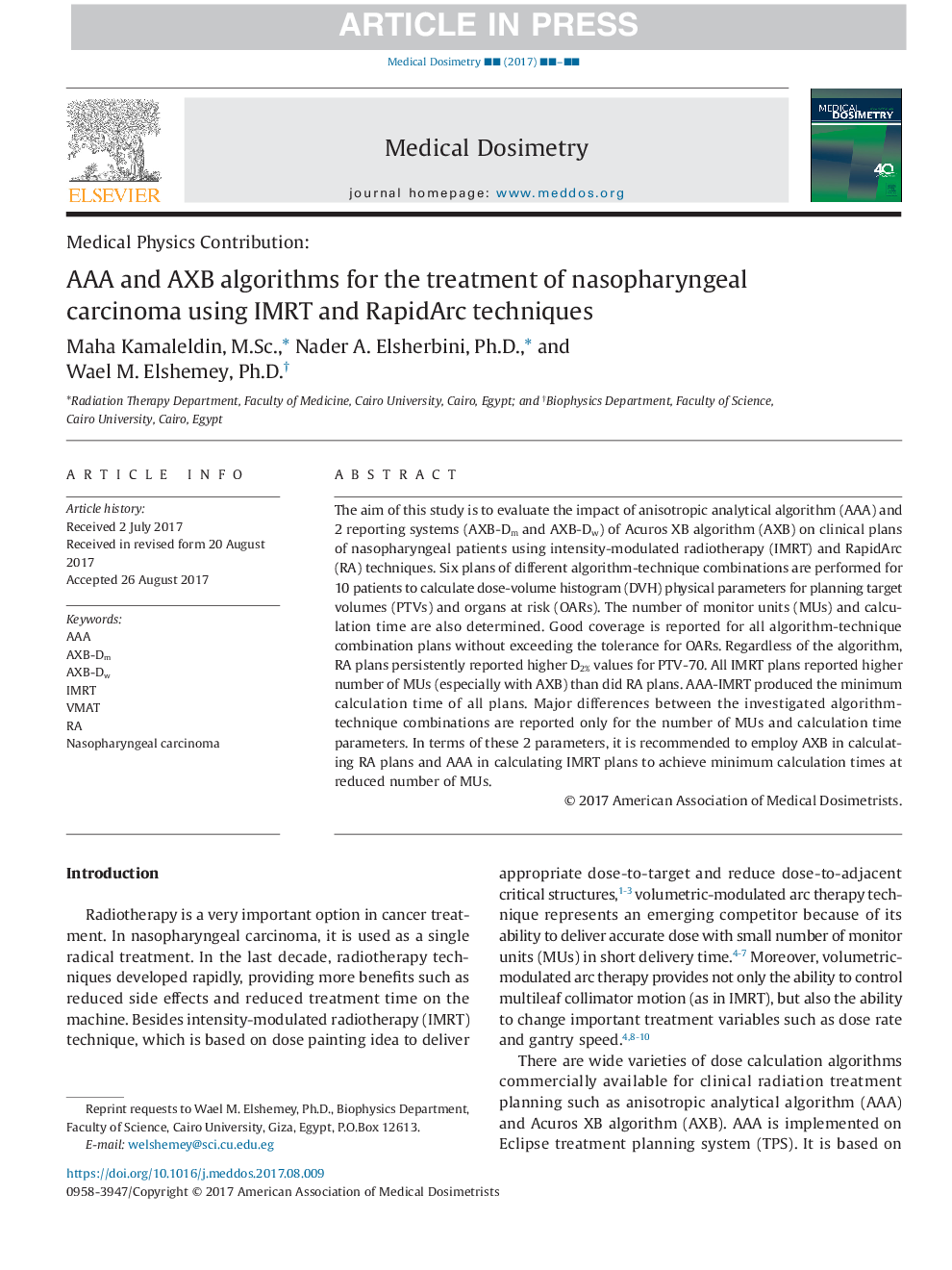| Article ID | Journal | Published Year | Pages | File Type |
|---|---|---|---|---|
| 8248186 | Medical Dosimetry | 2018 | 6 Pages |
Abstract
The aim of this study is to evaluate the impact of anisotropic analytical algorithm (AAA) and 2 reporting systems (AXB-Dm and AXB-Dw) of Acuros XB algorithm (AXB) on clinical plans of nasopharyngeal patients using intensity-modulated radiotherapy (IMRT) and RapidArc (RA) techniques. Six plans of different algorithm-technique combinations are performed for 10 patients to calculate dose-volume histogram (DVH) physical parameters for planning target volumes (PTVs) and organs at risk (OARs). The number of monitor units (MUs) and calculation time are also determined. Good coverage is reported for all algorithm-technique combination plans without exceeding the tolerance for OARs. Regardless of the algorithm, RA plans persistently reported higher D2% values for PTV-70. All IMRT plans reported higher number of MUs (especially with AXB) than did RA plans. AAA-IMRT produced the minimum calculation time of all plans. Major differences between the investigated algorithm-technique combinations are reported only for the number of MUs and calculation time parameters. In terms of these 2 parameters, it is recommended to employ AXB in calculating RA plans and AAA in calculating IMRT plans to achieve minimum calculation times at reduced number of MUs.
Keywords
Related Topics
Physical Sciences and Engineering
Physics and Astronomy
Radiation
Authors
Maha MSc, Nader A. PhD, Wael M. PhD,
